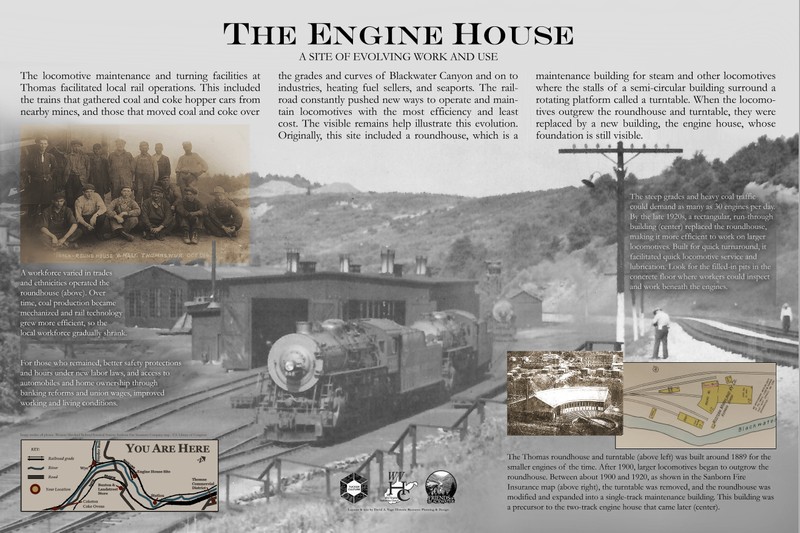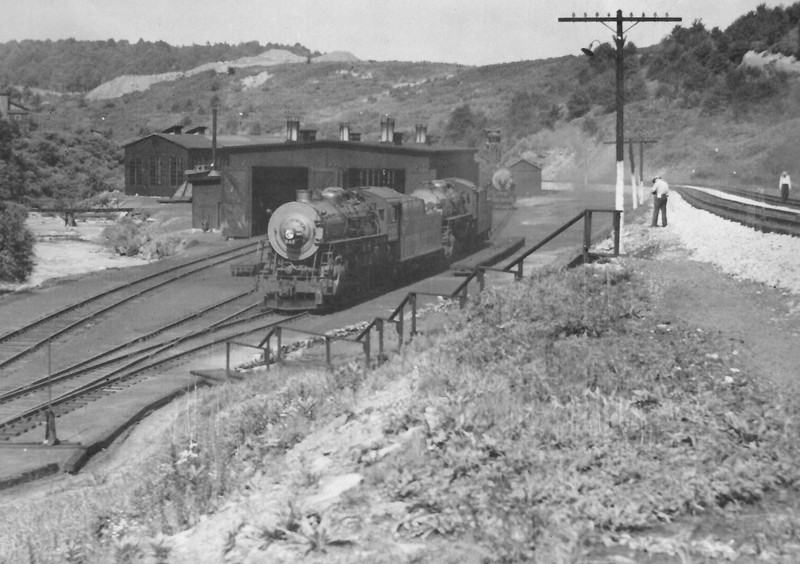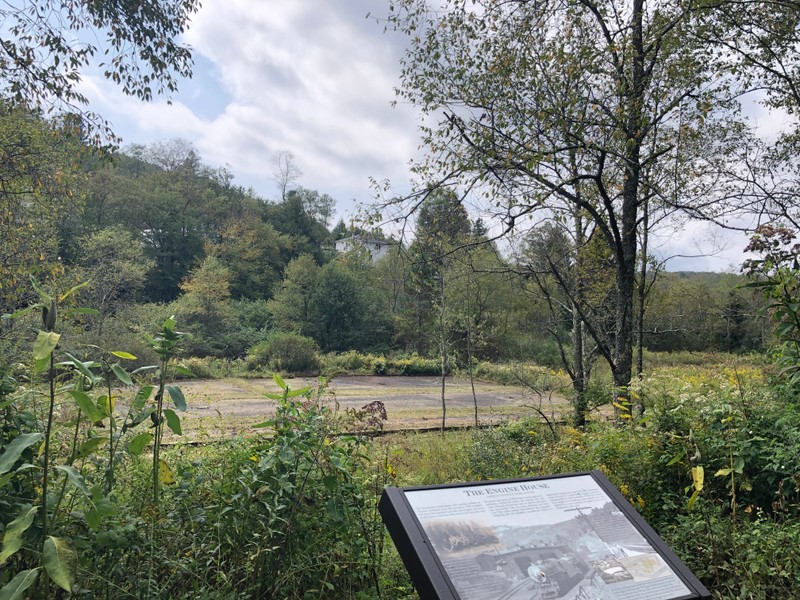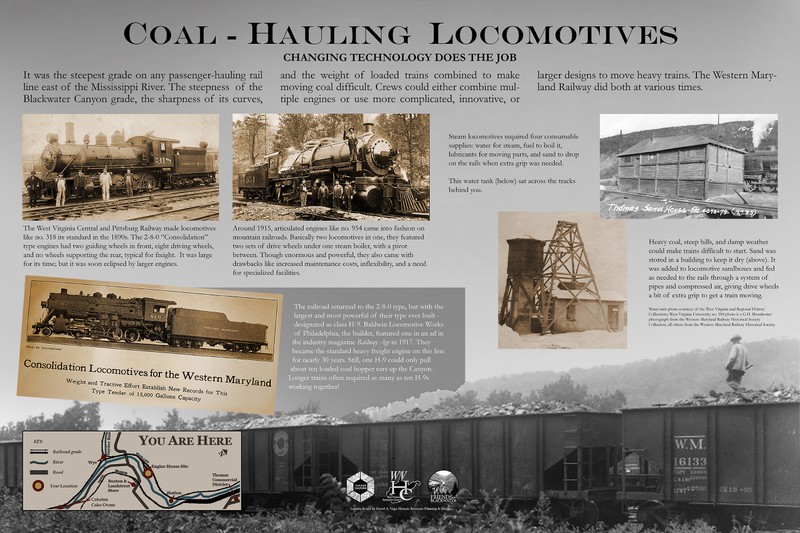The Engine House + Coal-Hauling Locomotives
Introduction
Text-to-speech Audio
Images
sign about the Engine House made by Friends of Blackwater

Engine house at Thomas, WV

location of the former Engine House

sign explaining the locomotives made by Friends of Blackwater

Backstory and Context
Text-to-speech Audio
The remains of the engine house at this site consists of a large rectangular pad that contained the remains of two tracks or two sets of rails. You’ll see a couple strips of grass or leaves depending on what the season is, where there were once picks between the rails where workers could step down underneath the locomotives and perform maintenance work as they sat in the building. This was typically for lighter repairs: lubrication and the kind of things that just kept operating locomotives going day in and day out. But because this was both the top of a railroad grade that required a lot of locomotives to move relatively few cars uphill, and because there were lots of branch lines feeding coal down from the mines into Thomas here that would have required each of their own locomotives. This would have actually been a very busy place for most of the time that the railroad operated.
Across the river on the hill behind me stands the B&L store, the engineering building, and some of the remaining company housing that overlooked the Western Maryland Railway— originally the West Virginia Central & Pittsburg Railway— engine house. A collection of buildings stood here that housed support operations for the operation of steam locomotives. Originally, there was what was called a roundhouse with a turntable; the turntable turned the locomotives to face in whichever direction the roundhouse housed minor repair operations like lubrication. Because so many locomotives were used on the trains here, that evolved over time, eventually the Western Maryland wound up with a rectangular building that sort of worked like a Jiffy Lube; engines were pulled through and were lubricated and came out the other end, lubricated and repaired in other ways. That was basically a product of the fact that so many locomotives were used at once as helper engines to bring the trains up the mountain; and a product of the fact that over time the locomotives grew in size, as the coal trains became heavier over time.
